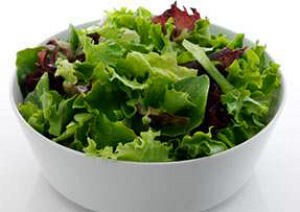Attention Deficit Hyperactivity Disorder (ADHD or ADD, attention deficit disorder) has been in the spotlight on and off over the years. It affects 8% to 10% of school-aged children, and about 2% to 5% of adults who still have this condition.
Typically a parent receives a note from school that they must come to a teacher/parent meeting and it is discussed that the child is disruptive in class, not paying attention, interrupting the teacher inappropriately and forgetting to do their homework. The teacher suggests that this may be a sign of hyperactivity. The school nurse is also of this opinion and they suggest getting a prescription for Ritalin or Adderall (amphetamine type medications), drugs that have been shown in other kids to be fairly effective in treating the symptoms.
Next the child is seen by the doctor who confirms the diagnosis and Ritalin (methylphenidate) is prescribed.
In an attempt to quickly control the situation, the side effects of Ritalin are often not discussed in detail: agitation, insomnia, nervousness, anxiety, nausea, vomiting and loss of appetite, palpitations, dizziness, headaches, an increase in the heart rate, blood pressure elevation, and even psychosis (Ref.1).
It is easy to just write a prescription for Ritalin and hope that all is well. Had the parents heard of all the possible side effects, they may have asked whether there were alternative treatments available.
The causes of hyperactivity (ADHD)
The exact cause of ADHD remains unknown, but there is a clustering of this condition in some families, so there seems to be a clear genetic component (Ref.2). It appears that several genes are involved, namely those associated with serotonin and glutamate transporters, but also those affecting dopamine metabolism. Males are affected with ADHD more often than females (in children 3:1, in adults 1:1).
Some remarks regarding brain development are in order: Dr. Kharrazian describes that the grey matter of the brain develops before the age of 9 and the development of the white matter is completed by the age of 19 (Ref. 3, p.3). In ADHD patients the frontal brain is underdeveloped resulting in an inability to suppress unacceptable behavior, immediate desires and impulses. Prescription drugs may alter the behavior on the surface, but the frontal brain development is still lagging behind. The only thing that can influence this is behavioral/cognitive therapy and extra tutoring while the symptoms are controlled. The window of opportunity is closed by the time the ADHD patient has reached the age of 19. After that a juvenile ADHD turns into a permanent adult ADHD. The cases that had only childhood ADHD and outgrew it were the ones where the frontal lobe abnormalities had corrected themselves before the age of 19.
This review article has noted that there is an association between a Western style diet (sugar and fat rich) and ADHD.
Interestingly both Ref. 1 and 2, which I would categorize as having originated from mainstream conventional medicine circles, deny such an association. But the link also noted that a healthy diet with fiber, folate, and omega-3 fatty acids as well as supplementation with iron and zinc when these minerals are found to be low in the blood, do make a significant difference in ADHD patients towards normalization of their symptoms.
One of the under diagnosed causes of ADHD is gluten sensitivity as Dr. Perlmutter described in his book (Ref. 4, pages 150-158). This can spare the child or teenager the toxic side effects of anxiolytics, antidepressants or antipsychotics that may be inappropriately prescribed by their physicians, and a gluten free diet would allow the brain to recover very quickly in such cases. A food sensitivity history and some simple gluten sensitivity blood screening tests will diagnose this condition or rule it out.
To complicate matters even more, Dr. Amen has mentioned in several books that there are at least 7 different subcategories of ADHD that he has found in ADHD patients when studying thousands of single-photon emission computed tomography brain scans (SPECT brain scans). Dr. Amen mentions that the 7 subcategories of ADHD are the combined type ADD, the primarily inattentive ADD subtype, overfocused ADD, temporal lobe ADD, limbic ADD, ring of fire ADD and trauma induced ADD. Dr. Amen explains that each of these types needs to be treated differently and some of the treatment failures are explained by the fact that the wrong type of ADD was treated (Ref.5).
Treatment of ADHD
In the following I mention 5 steps that are useful for treating ADHD patients.
- A first step toward normalization of the metabolic changes in the brain metabolism of the affected child or adult is to adopt a diet that has been linked with low risk for ADHD: avoid food additives, cut out refined sugar, avoid known food allergies like gluten sensitivity and others. You may need to test the patient for food allergies using an elimination diet. Add a good amount of molecularly distilled omega-3 fatty acids (the pure form of omega-3 without mercury, lead or PCBs) as this has shown beneficial effects in ADHD patients.
- Involve a behavioral psychologist for behavioral/cognitive therapy treatments. This is particularly effective in the 9 to 19 year old category where the frontal region of the brain is still developing.
- Work together with the schoolteacher and get supplemental teaching in areas of academic weakness to reduce the frustrations in the classroom setting.
- In adolescent girls who just started their period, a relative lack of progesterone (estrogen dominance) may be a contributory factor. A small dose (20mg to 30 mg) of bioidentical progesterone from day 6 to 16 of the menstrual cycle may help significantly in alleviating the symptoms of ADHD. You may need to consult a naturopathic doctor or anti-aging physician to get a prescription for that.
- If all of this helps only marginally, then a smaller amount of Ritalin may be helpful; however, blood tests should be drawn from time to time to monitor for drug toxicity as the rate of absorption and elimination of the drug varies significantly from patient to patient.
It is interesting that studies have shown that a combination of Ritalin or Adderall with alternative treatment methods had a better outcome than either method alone.
Conclusion
It is important to think about the various possible causes of ADHD and not just get caught up in the knee-jerk reflex of treating ADHD with Ritalin (note that this was only step 5 above, if all the other things failed). In co-operation with the school system and using alternative ways at home first (change of diet, possible addition of low dose bioidentical progesterone cream in girls) and additional tutoring in weak school subjects the need for Ritalin may be avoided. If all else fails, the conservative approach is still available, but I suggest that drug monitoring (blood levels that should be done from time to time to avoid toxicity) is important.
More information about ADHD: http://nethealthbook.com/mental-illness-mental-disorders/developmental-disorders/attention-deficithyperactivity-disorder/
References
1. Ferri: Ferri’s Clinical Advisor 2014, 1st ed., © 2013 Mosby.
2. Jacobson: Psychiatric Secrets, 2nd ed., © 2001 Hanley and Belfus
3. Dr. Datis Kharrazian: “Why Isn’t My Brain Working?” © 2013, Elephant Press, Carlsbad, CA 92011
4. David Perlmutter, MD: “Grain Brain. The Surprising Truth About Wheat, Carbs, And Sugar-Your Brain’s Silent Killers.” Little, Brown and Company, New York, 2013.
5. Daniel G. Amen: “Use Your Brain To Change Your Age” © 2012, Harmony Books, An imprint of Crown Publishing.
Last edited Nov. 7, 2014









